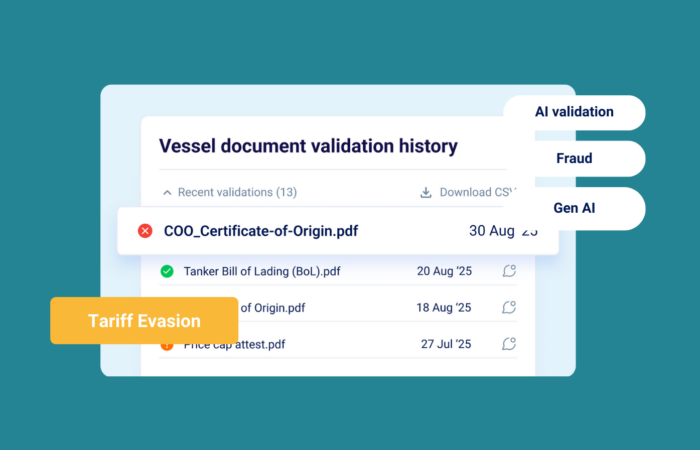From Overload to Insight: How OSINT-Powered Anomaly Explanations Are Transforming Maritime Investigations

What’s inside?
It’s 08:00. A new maritime anomaly alert just came in – there’s an unexpected surge of vessels in a sensitive area.
The analyst’s job: explain it. Fast.
Before: Cognitive and Resource Overload
Step one: scan for answers. Dozens of browser tabs open – global news outlets, niche maritime blogs, obscure local news sites (in languages they can’t read), weather trackers, shipping advisories, satellite imagery tools, and social media posts from activists and port spotters.
Step two: build the timeline. Piece together when the anomaly started. Match snippets of data to the right time frame. Was it triggered by bad weather? A new regulation? A strike? A naval deployment?
Step three: connect the dots. This is the hardest part – turning “something strange is happening” into “this is why” and “this is what it could mean.” It often involves interviewing colleagues, reviewing classified partner feeds, and making informed judgments — all under tight deadline pressure.
Step four: write it up. Not just for documentation. This needs to be clear, strategic, and actionable – the kind of report decision-makers can actually use.
Now it’s hours later, and in high-stakes environments, the window for action may already be closing. And that was just one anomaly. Multiply this by dozens, across multiple regions of interest, and the cognitive burden becomes overwhelming.
Now: From Detective Work to Decision Support
It’s still 08:00. The same alert comes in. But this time, everything changes.
Instead of manually scanning endless sources, a virtual subject-matter expert is already on the case. It’s not a human, but it works like one, only faster and with the ability to scan thousands of sources at once.
Windward’s enhanced anomaly explanations combine early detection insights with real-time open-source intelligence (OSINT). The moment an anomaly is flagged, the system begins scanning, correlating, and contextualizing public data: news, blogs, social media, weather reports, government advisories, shipping bulletins, and more. Within minutes, it delivers a structured, shareable report outlining:
- What is happening
- Why it’s happening now
- What could it mean next
No more tab overload. No more guesswork. No more delay.
This isn’t just another MAI Expert™ summary – it’s a leap forward. A virtual analyst that does the legwork of investigation, reasoning through public domain signals, and aligning them with anomaly detection in real time.
Real Examples, Real Impact
LNG Tankers in Oman (June 2025)
Windward’s Early Detection flagged an unusual concentration of LNG tankers drifting off Oman’s coast. MAI Expert™ connected it to rising security risks in the Strait of Hormuz, and a commercial directive instructing vessels to reroute closer to Oman’s waters to avoid escalation.
Concentration of Russian Vessels in Cyprus (July 2025)
A spike in Russian-affiliated anchoring in Cyprus waters was correlated with the UK’s implementation of new sanctions targeting Russia’s shadow fleet and the ongoing security situation in the Red Sea, forcing Russian oil tankers to seek alternative routes.
Drop in Japanese Naval Port Calls
MAI Expert™ flagged a drop in Japanese military vessels calling at port. OSINT revealed it followed China’s historic dual aircraft carrier deployment near Japanese waters, suggesting increased operational deployments and heightened regional tension.
This kind of correlation, aligning vessel behaviors with real-time geopolitical and security developments, used to take hours of specialized research. Now, it’s delivered instantly, right at the point of alert.
From Alert to Action – in Minutes, Not Hours
For analysts, this means cutting hours of research into minutes. More than just saving time, it levels the playing field, providing clear and actionable insights at every stage of the maritime response process. With clear, explainable intelligence, insights no longer stay locked within the maritime expertise bubble. Now, anyone, from a senior official to a ground-level responder, can understand and act on maritime anomaly reports with confidence.
This transformation isn’t theoretical. It’s already reshaping how investigations begin, how risks are escalated, and how decisions are made.
With every anomaly now explained and substantiated by a virtual subject-matter expert, early detection evolves from a heads-up into a launchpad for investigation, prioritization, and action.
This represents a shift in how maritime intelligence work is done – faster, smarter, and more accessible to the entire decision-making chain.
Welcome to the future of maritime investigations.












